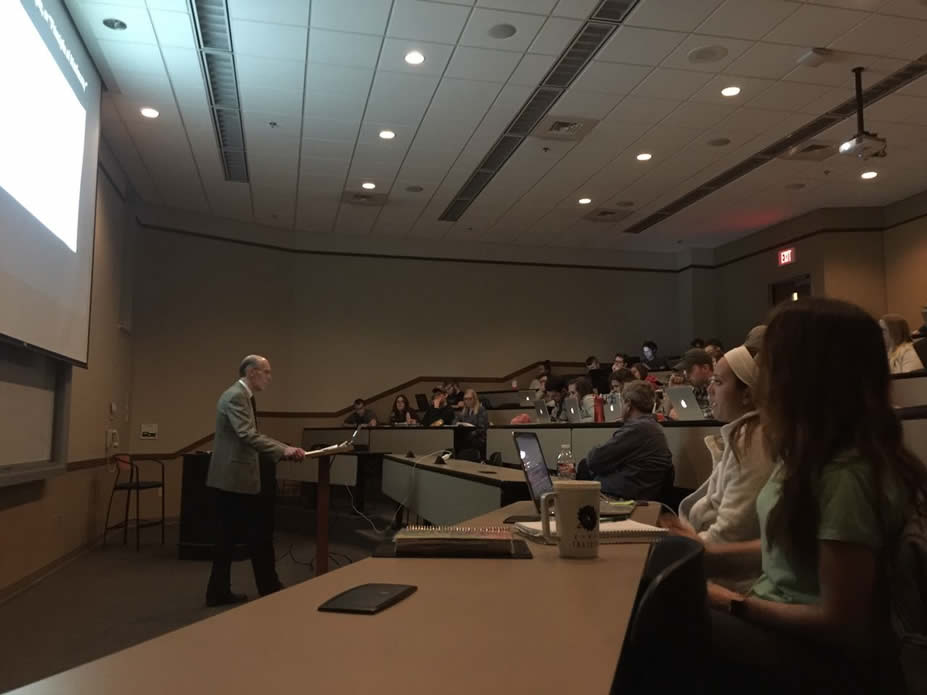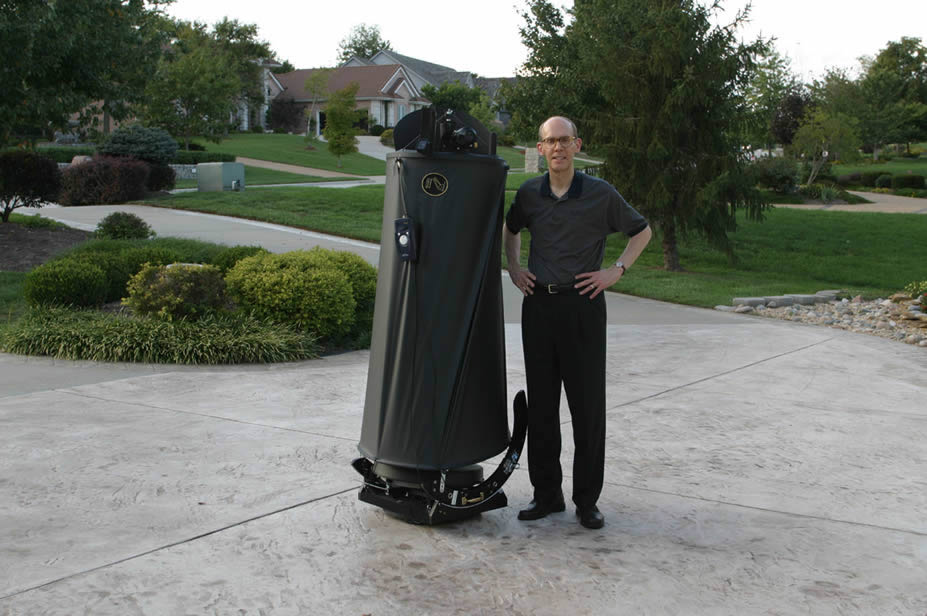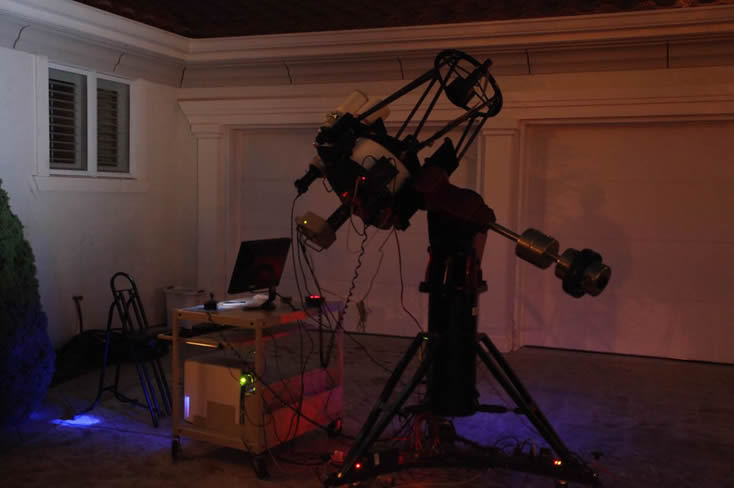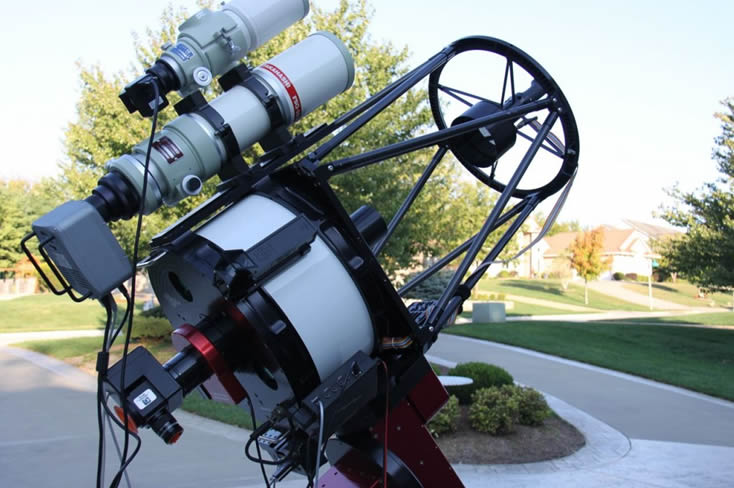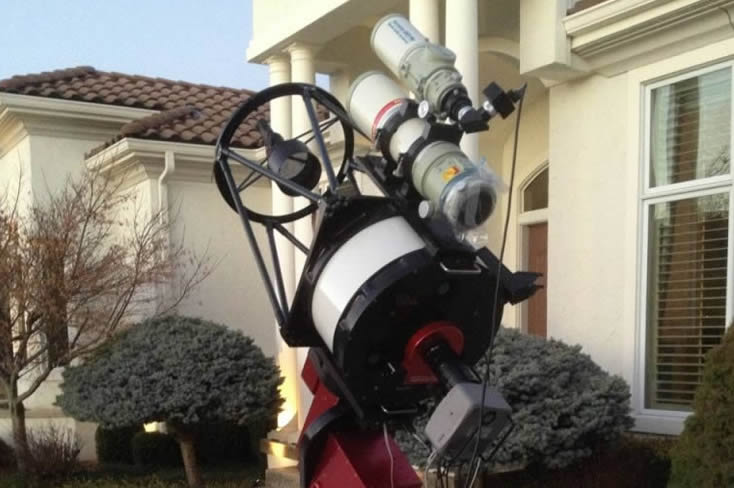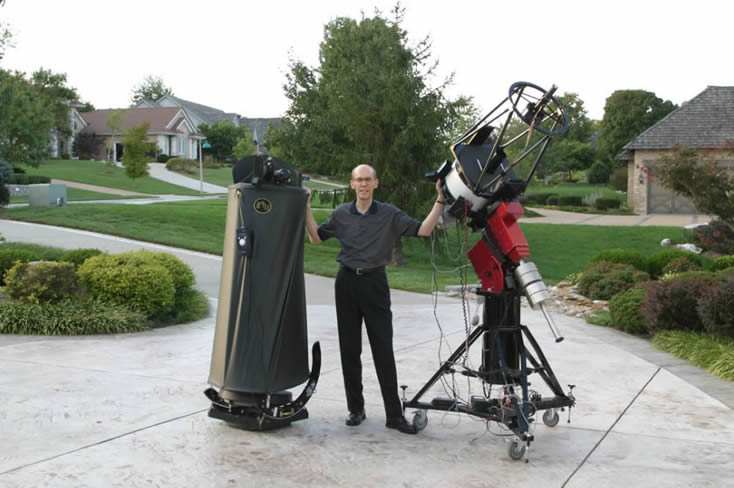Resources
MY EQUIPMENT:
I own four primary telescopes which you can see depicted in these images:
-
An Obsession 18” “ultra-compact” dobsonian reflector which is a portable configuration that easily can be collapsed to a small size that fits in the back of my car. I can take it to remote, dark locations for extraordinary viewing unhindered by light pollution. Observing the heavens on a dark, moonless night from a remote location using a large aperture telescope is a truly breathtaking experience.
-
An 11” Celestron Schmidt-Cassegrain (SCT) that I use for viewing the heavens, and planetary imaging.
-
A Takahashi FSQ106ED 4” apochromatic refractor.
-
A Takahashi Sky90 3.5” apochromatic refractor. Both refractors are apochromatic, meaning that they do not display the “chromatic aberration” typical of refractor telescopes. Chromatic aberration (“false color”) refers to the fact that different wavelengths (colors) of visible light have different indices of refraction when passing through a medium like glass, meaning that they do not come to focus at the same
point. This results in unnatural blue halos around most stars. Overcoming this problem led Isaac Newton to invent the “reflector” telescope. Another way to avoid chromatic aberration is to make lenses out of the mineral fluorite rather than glass. While fluorite is expensive, and difficult to grind, it is essentially parfocal, meaning that all wavelengths of visible light pass through it and achieve focus at the same point. The result is exquisite, brilliant, pinpoint images of stars without any chromatic discoloration or halos.
For several years I owned a 15” Ritchey-Chretien “truss” telescope made by RC Optical Systems in Flagstaff, Arizona. The primary mirror was “ion beam figured,” a special process that achieves optical smoothness down to the molecular level. The telescope was mounted to a Paramount ME mount made by Software Bisque. It is a premium mount that easily supported my payload (nearly 100 pounds of telescopes and camera), and could be operated robotically. The black pier beneath the Paramount ME mount is an ATS portable pier. All of this equipment rests atop JMI Wheelie Bars. I rolled the equipment out of my garage onto the driveway for each imaging session. This required me to polar align the scope each night, a process which took up to two hours using a program called TPoint. The skies from my home have a limiting visual magnitude of 4.5 to 5 on the best nights, which is marginal. But most of my imaging was done after midnight, when conditions improved due to atmospheric stabilization and ambient light reduction. I used an SBIG STL11000 CCD camera for imaging, and I controlled my telescope, camera, and mount using Maxim DL and SkyX Pro software.
A few years ago I sold my Ritchey-Chretien telescope to Deep Sky West Remote Observatory near Rowe, New Mexico. It is now located atop a mountain at 7,500’ elevation under pristine skies without light pollution. I continue to have “remote” access to my old telescope and can operate it from my home office.
